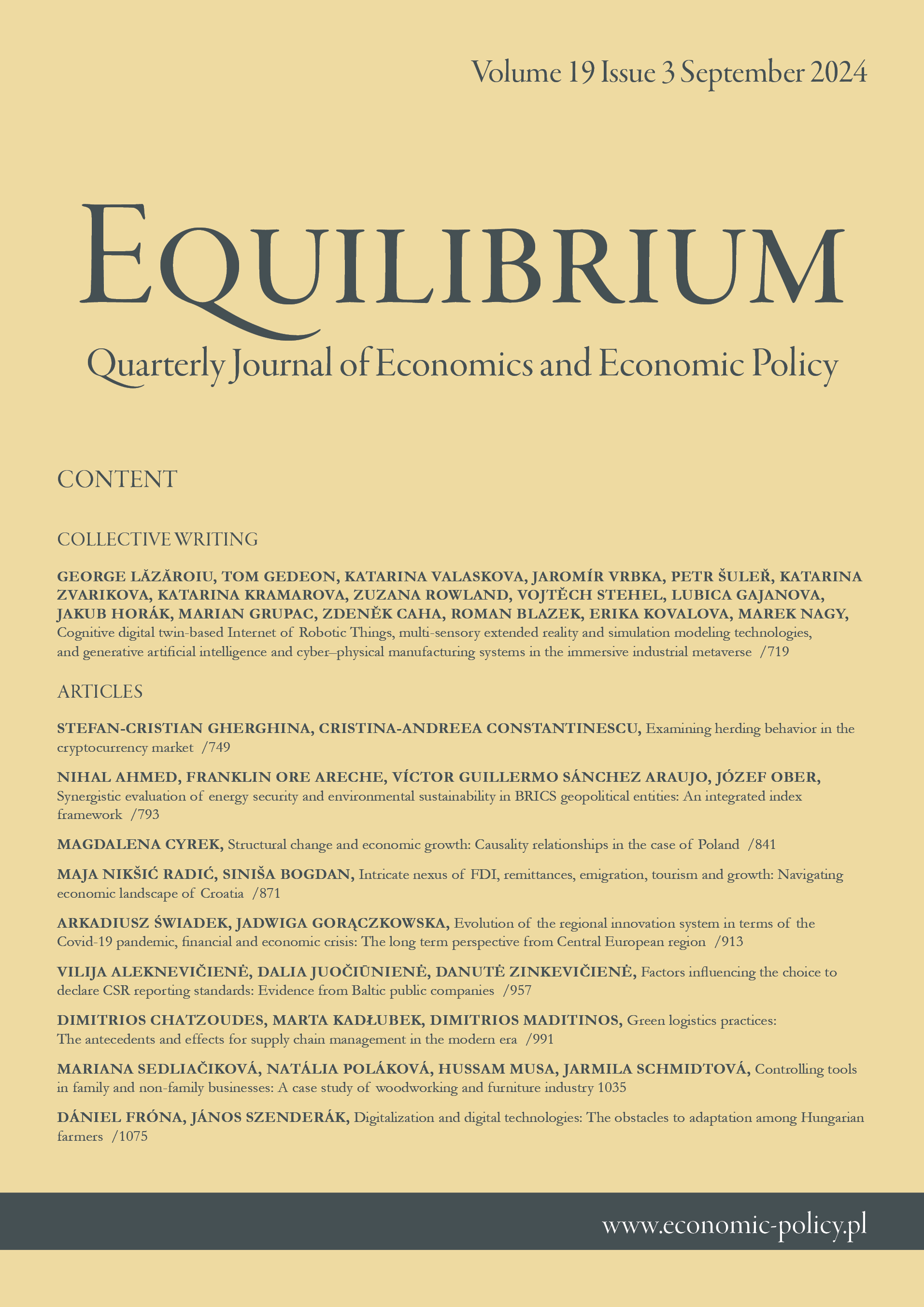Controlling tools in family and non-family businesses: A case
study of woodworking and furniture industry
Controlling tools in family and non-family businesses: A case
study of woodworking and furniture industry
Author(s): Mariana Sedliačiková, Natália Poláková, Hussam Musa, Jarmila SchmidtováSubject(s): Business Economy / Management, Socio-Economic Research
Published by: Instytut Badań Gospodarczych
Keywords: controlling; controlling tools; family businesses; non-family businesses; woodworking and furniture industry;
Summary/Abstract: Research background: Many studies point to the fact that the use of controlling in familybusinesses differs from that in non-family businesses and depends on factors that cannot be observed in non-family businesses. The research into the application of controlling tools infamily and non-family businesses operating in the woodworking and furniture industry inSlovakia as a unique interconnection of the issues of family businesses, controlling and theSlovak woodworking and furniture industry has not been so far carried out.Purpose of the article: The aim of the paper is to identify significant differences in the applica-tion of tools of individual controlling subsystems between family and non-family businessesoperating in the woodworking and furniture industry in Slovakia on the basis of a compre-hensive mapping of the utilization of controlling tools in the businesses in question.Methods: The mapping of the issue was carried out by questionnaire-based method. In total,seven hypotheses were formulated. The validity of the assumed hypotheses was verified bytwo sample z-test. To generalize the obtained results to the entire basic set, verification of theminimum sample size was carried out. The representativeness of the sample was verified bythe Pearson's Chi-square test of goodness-of-fit.Findings & value added: Based on the findings, it can be concluded that there are indeedsignificant differences in the use of controlling tools between family and non-family business-es operating in the industries in question. The results have showed the existence of significantdifferences in the use of tools of all examined controlling subsystems. It can be concluded thatthe application of controlling tools in the family businesses is significantly different from thatin the non-family businesses. It can also be observed that family businesses of the industries inquestion tend to use controlling in an insufficient way and in general to a lesser extent com-pared to non-family businesses. The main benefit of the paper is the identification of the use ofcontrolling tools in Slovak family businesses operating in the woodworking and furnitureindustry compared to non-family businesses. This knowledge can be valuable for practitionersand researchers in the field. The contribution also refers to the future direction of the devel-opment of the Slovak woodworking and furniture family businesses.
Journal: Equilibrium. Quarterly Journal of Economics and Economic Policy
- Issue Year: 19/2024
- Issue No: 3
- Page Range: 1035-1074
- Page Count: 40
- Language: English

